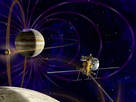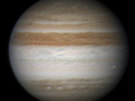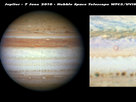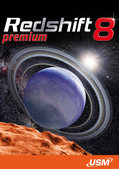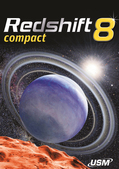NASA's Jupiter
Bound Spacecraft Taking Shape In Denver
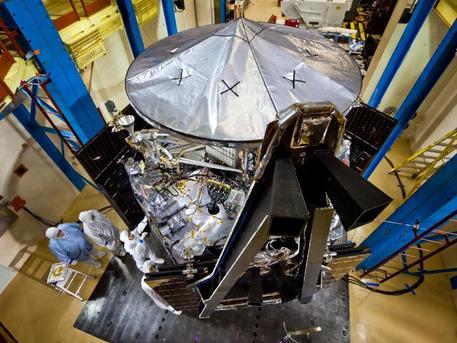 © NASA/JPL-Caltech/LMSS
|
NASA's fully assembled Juno spacecraft is currently undergoing testing at Lockheed Martin Space Systems near Denver. Technicians are inspecting some of the spacecraft's components. All three solar array wings can be seen installed and stowed, and the spacecraft's large high-gain antenna in place on top. Juno is scheduled to ship from Lockheed Martin's facility to Kennedy Space Center in April, where it will undergo final preparations for launch in August 2011. The solar-powered spacecraft will orbit Jupiter's poles to find out more about the gas giant's origins, structure, atmosphere and magnetosphere.
In this photo, taken on Jan. 26, Juno had just completed acoustics testing that simulated the acoustic and vibration environment the spacecraft will experience during launch. The photo shows Lockheed Martin technicians inspecting the spacecraft just after the test. All three solar array wings are installed and stowed, and the spacecraft's large high-gain antenna is in place on the top of the avionics vault.
At present, Juno is sealed in a large thermal vacuum chamber, where it is being exposed to the extreme cold and vacuum conditions it will experience on its voyage to Jupiter. The two-week-long test will simulate many of the flight activities the spacecraft will execute during the mission.
Juno is scheduled to ship from Lockheed Martin's facility to Kennedy Space Center in early April, where it will undergo final preparations and launch.
NASA's Jet Propulsion Laboratory, Pasadena, Calif., manages the Juno mission for the principal investigator, Scott Bolton, of Southwest Research Institute at San Antonio, Texas. Lockheed Martin Space Systems, Denver, is building the spacecraft. The Italian Space Agency in Rome is contributing an infrared spectrometer instrument and a portion of the radio science experiment. JPL is a division of the California Institute of Technology in Pasadena.
Source: NASA
NASA's Jupiter
Bound Spacecraft Taking Shape In Denver
 © NASA/JPL-Caltech/LMSS
|
NASA's fully assembled Juno spacecraft is currently undergoing testing at Lockheed Martin Space Systems near Denver. Technicians are inspecting some of the spacecraft's components. All three solar array wings can be seen installed and stowed, and the spacecraft's large high-gain antenna in place on top. Juno is scheduled to ship from Lockheed Martin's facility to Kennedy Space Center in April, where it will undergo final preparations for launch in August 2011. The solar-powered spacecraft will orbit Jupiter's poles to find out more about the gas giant's origins, structure, atmosphere and magnetosphere.
In this photo, taken on Jan. 26, Juno had just completed acoustics testing that simulated the acoustic and vibration environment the spacecraft will experience during launch. The photo shows Lockheed Martin technicians inspecting the spacecraft just after the test. All three solar array wings are installed and stowed, and the spacecraft's large high-gain antenna is in place on the top of the avionics vault.
At present, Juno is sealed in a large thermal vacuum chamber, where it is being exposed to the extreme cold and vacuum conditions it will experience on its voyage to Jupiter. The two-week-long test will simulate many of the flight activities the spacecraft will execute during the mission.
Juno is scheduled to ship from Lockheed Martin's facility to Kennedy Space Center in early April, where it will undergo final preparations and launch.
NASA's Jet Propulsion Laboratory, Pasadena, Calif., manages the Juno mission for the principal investigator, Scott Bolton, of Southwest Research Institute at San Antonio, Texas. Lockheed Martin Space Systems, Denver, is building the spacecraft. The Italian Space Agency in Rome is contributing an infrared spectrometer instrument and a portion of the radio science experiment. JPL is a division of the California Institute of Technology in Pasadena.
Source: NASA





